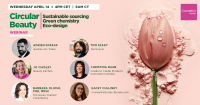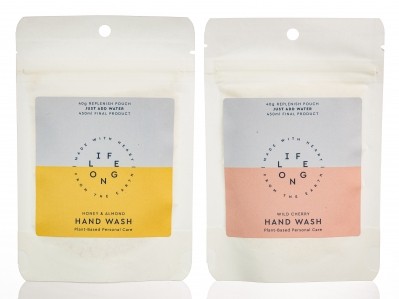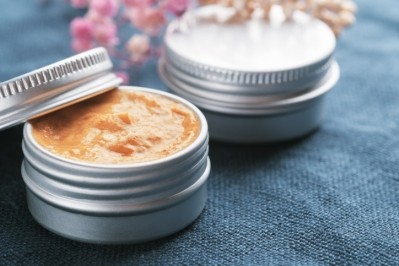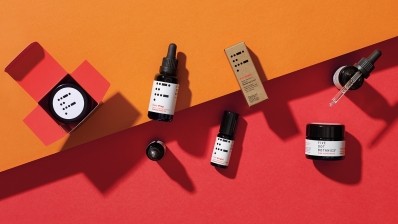The no waste era? Every beauty brand can ‘reformulate, reposition and renew’

Circular beauty had gained considerable traction in recent years, propelled by widespread brand pledges, government action and NGO initiatives worldwide aimed at building out a truly global circular economy where waste was eliminated and resources continually used.
And with calls for circularity in beauty loudening, many brands had started to truly explore supply chains that implemented waste reduction and zero waste strategies – an important part of the concept for consumers, according to Neil Petrocelli and Ehrin Ziccardi, founders of online beauty portal and incubator for upcoming brands Undrgrnd Beauty.
“Today's consumers know their ingredients – they are driving change – and demand for greater transparency and reduced waste is higher than ever as the challenges of the pandemic have only heightened the importance of protecting nature and the health and wellness of all on Earth,” Ziccardi told CosmeticsDesign-Europe.
From natural to green to sustainable, she said industry was now at the forefront of circular beauty – the era of no waste.
Every year, the global cosmetics industry produced more than 120 billion units of packaging, according to Zero Waste Europe. And with the amount of packaging in landfill anticipated to reach 12 billion tonnes by 2050 if consumption continued Petrocelli said circular beauty was “a positive step towards helping reduce the impact”.
Demand for clean beauty ‘leads the way forward’
And Ziccardi said that, for consumers, this all played into clean beauty – a trend that had transformed into a category of its own, and one that was “here to stay”.
“The demands for clean products – as this is what is applied to the skin directly – leads the way forward,” she said.
And this rise of clean beauty and the confidence it created, she said, could pave the way for brands taking steps towards circularity. “Clean beauty has the most immediate resonance with consumers, and then once that is accomplished, the sustainable sourcing should follow with immediacy,” she said.
The future of Circular Beauty
Interested in hearing more on opportunities and challenges in Circular Beauty? Register for free to join our expert webinar on April 14th where Garnier, TerraCycle, Beauty Kitchen, Cradle to Cradle and The Green Chemist Consultancy executives will explore sustainable sourcing, green chemistry and eco design.
“We believe the priority points directly to green chemistry and sustainable sourcing.”
Whilst circular design could be factored into early research and development efforts for new brands or lines, Ziccardi said growing and established brands could also shift to become circular.
"In the ever-evolving personal care industry, there is no 'late' – every brand has the opportunity to reformulate, reposition, and renew,” she said.
COVID-19 and climate change woes accelerating circular principles
Adoption and focus on circular beauty had certainly been accelerated by increased concerns around climate change and ongoing efforts to reach the United Nations’ Sustainable Development Goals by 2030, but Ziccardi said the COVID-19 pandemic had also created a shift.
“Post-COVID, the urgency for self-care with a community conscience becomes even greater,” she said.
And beauty and personal care brands were now teaming up, exploring innovation and delving into new and creative ideas to improve sourcing, utilise lab-made synthetic ingredients, produce smarter packaging options and develop waste-reduction efforts.
Petrocelli said: “Brands are doing their part to greatly enhance sustainability and operating with circular principles” – from body scrubs made with used coffee grounds from UpCircle to lip balms made with fruit juice pulp from Fruu.
And for indie startups entering the beauty arena, formulators and manufacturers were prompting circular innovations by implementing cradle-to-cradle designs to spur novel strategies for now and in the years to come, he said.
Waterless beauty would also continue to gain traction, for example, with Undrgrnd Beauty earmarking brands such as EC30, Green + Bare and Henua Organics.
Consumer engagement and attitudes to green chemistry
But beyond reformulation, packaging and supply chain efforts, Petrocelli said the spotlight had also turned to the consumer.
“Sustainability, green consciousness, and an overall 'awareness' of the role as a consumer in what is to become of the landscape will drive personal care purchase decisions,” he said.
It was therefore vital brands rethought their producer-consumer relationship, he said, by “placing value on minimised ecological and social costs”. In doing so, beauty and personal brands would endear themselves to a like-minded audience and maintain competitiveness in this new market, he said.





















